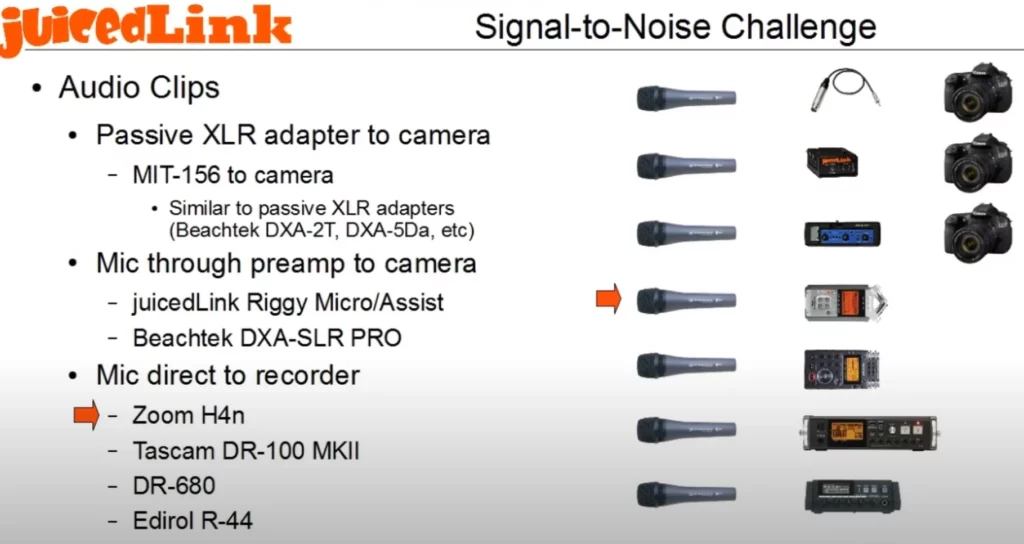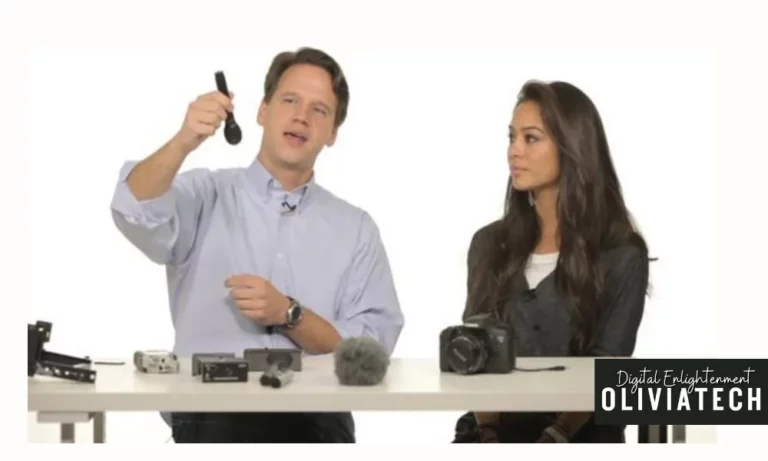For filmmakers, videographers, and audio professionals, capturing clean, high-quality audio is just as crucial as the visuals. Background noise, hiss, and poor signal quality can ruin an otherwise perfect recording.
That’s why choosing the right audio recording equipment is essential. In a comprehensive test conducted by Robert from JuicedLink, popular external audio recorders and preamps were put through rigorous signal-to-noise testing, providing valuable insights for anyone serious about audio quality.

This article expands on that test, exploring the key findings and what they mean for your audio workflow.
The Test Setup
Robert’s test focused on measuring the signal-to-noise ratio (SNR) of various devices. SNR is a crucial metric that compares the level of the desired signal to the level of background noise.
A higher SNR indicates a cleaner signal with less noise. The devices tested included a range of popular options, from portable recorders to dedicated preamps:
- Zoom H4n: A widely used, affordable portable recorder.
- Tascam DR-100 MKII: Another popular portable recorder known for its versatility.
- Sound Devices 702: A professional-grade field recorder known for its exceptional audio quality.
- Beachtek DXA-SLR PRO: An adapter designed to improve audio input for DSLR cameras.
- Edirol R44: A multi-track portable recorder often used for field recording and music production.
- Tascam DR-680: A portable multi-track recorder offering a range of input options.
- JuicedLink Riggy Micro / Assist: JuicedLink’s own preamp solutions designed to improve audio input for cameras and recorders.
Key Findings and Analysis
The tests revealed significant differences in SNR performance across the devices. Here’s a breakdown of the key observations:
- Professional Recorders Excel: As expected, the Sound Devices 702 demonstrated significantly superior SNR performance compared to the more budget-friendly options. This highlights the advantage of investing in professional-grade equipment when pristine audio is paramount.
- Preamps Make a Difference: The JuicedLink Riggy Micro/Assist preamps showed a noticeable improvement in SNR when paired with cameras or recorders that had weaker preamps. This demonstrates the value of using external preamps to boost signal quality and reduce noise, especially with DSLR cameras or lower-end recorders.
- Portable Recorders Vary: The Zoom H4n and Tascam DR-100 MKII, while popular for their portability and features, exhibited lower SNR compared to the Sound Devices and when used with external preamps. This highlights the trade-off between convenience and audio quality.
- DSLR Audio Limitations: The Beachtek DXA-SLR PRO, designed to improve DSLR audio, showed some improvement over direct camera input, but still lagged behind dedicated recorders and preamp combinations. This reinforces the common understanding that DSLRs are not ideal for high-quality audio recording without external solutions.
- Multi-track Recorders in the Mix: The Edirol R44 and Tascam DR-680, being multi-track recorders, offered a balance of features and audio quality. While not reaching the level of the Sound Devices 702, they provided better SNR performance than the lower-end portable recorders.
Implications for Audio Professionals
These findings have several important implications:
- Budget vs. Quality: If budget is a primary concern, portable recorders like the Zoom H4n or Tascam DR-100 MKII can be viable options. However, be aware of their limitations in SNR and consider using external preamps if possible.
- Importance of Preamps: Investing in a quality preamp, like the JuicedLink Riggy Micro/Assist, can significantly improve audio quality, especially when using DSLRs or lower-end recorders.
- Professional Solutions for Critical Projects: For projects where audio quality is absolutely critical, investing in a professional-grade field recorder like the Sound Devices 702 is highly recommended.
- Matching Equipment to Needs: The best choice ultimately depends on the specific needs and budget of the user. Consider the recording environment, the importance of audio quality, and the available budget when making a decision.
Also Read: Understanding proper recording techniques is key to getting the most out of your gear. Explore essential best practices for capturing quality audio to achieve professional results with any device.
Key Concepts for Capturing Quality Audio: Insights on SNR, Polar Patterns, and Preamps
Let’s delve deeper into the core concepts of capturing quality audio, as discussed in the video featuring Robert and myself.
We covered several crucial aspects, including signal-to-noise ratio, microphone polar patterns, and the role of preamps. Understanding these elements is fundamental to achieving professional-sounding recordings.

